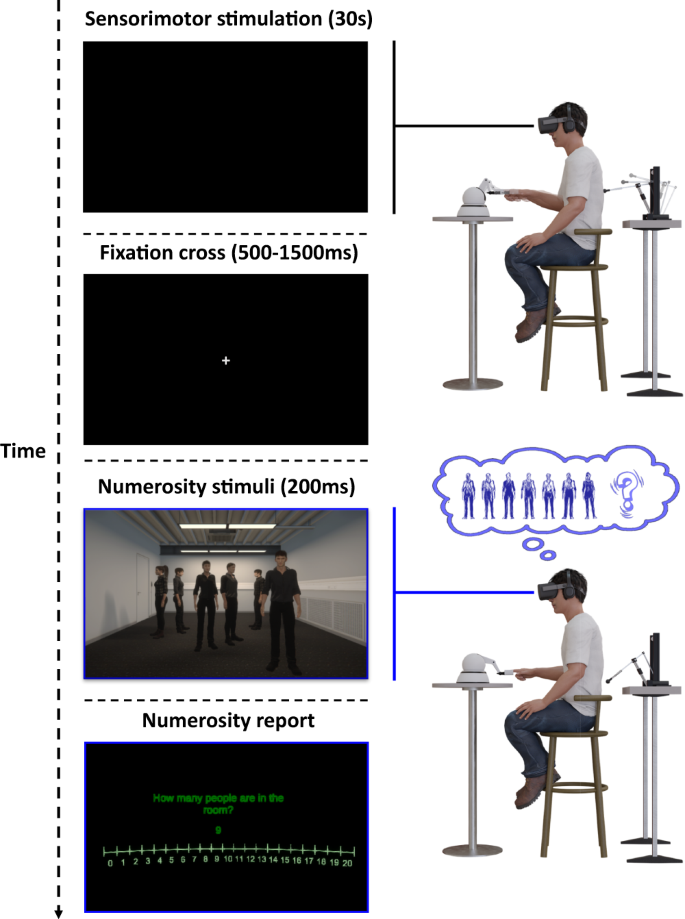2024-03-12 スイス連邦工科大学ローザンヌ校(EPFL)
<関連情報>
- https://actu.epfl.ch/news/the-surprising-effect-of-presence-hallucinations-o/
- https://www.nature.com/articles/s41467-024-45912-w
パーキンソン病における幻覚のデジタルロボットマーカーとしての仮想人間の数値推定 Numerosity estimation of virtual humans as a digital-robotic marker for hallucinations in Parkinson’s disease
Louis Albert,Jevita Potheegadoo,Bruno Herbelin,Fosco Bernasconi & Olaf Blanke
Nature Communications Published:12 March 2024
DOI:https://doi.org/10.1038/s41467-024-45912-w

Abstract
Hallucinations are frequent non-motor symptoms in Parkinson’s disease (PD) associated with dementia and higher mortality. Despite their high clinical relevance, current assessments of hallucinations are based on verbal self-reports and interviews that are limited by important biases. Here, we used virtual reality (VR), robotics, and digital online technology to quantify presence hallucination (vivid sensations that another person is nearby when no one is actually present and can neither be seen nor heard) in laboratory and home-based settings. We establish that elevated numerosity estimation of virtual human agents in VR is a digital marker for experimentally induced presence hallucinations in healthy participants, as confirmed across several control conditions and analyses. We translated the digital marker (numerosity estimation) to an online procedure that 170 PD patients carried out remotely at their homes, revealing that PD patients with disease-related presence hallucinations (but not control PD patients) showed higher numerosity estimation. Numerosity estimation enables quantitative monitoring of hallucinations, is an easy-to-use unobtrusive online method, reaching people far away from medical centers, translating neuroscientific findings using robotics and VR, to patients’ homes without specific equipment or trained staff.


